This is one of my favorite ways to secure a timbered post to concrete. It uses a TimberLinx Connector with a piece of 7/8″ galvanized all thread rod that has been epoxied into the concrete. This allows you to adjust the exact placement of the connector after the concrete has been poured and not while the concrete is being poured. The connector has good uplift and shear values, is easy to install and the cheapest method available that allows you to hide the connector completely.
There are a couple downsides and issues that do crop up. The first is that you have to lay out the placement of the all thread exactly and have it plumb before the epoxy dries to insure proper alignment with the posts and connectors. The second is to have the holes drilled properly for the TimberLinx Connectors, otherwise the expanding wedge connector may not align correctly. While these are considerations…just think it through , measure three times and then have someone check your work.
Click Images for Slide Show and Larger Images
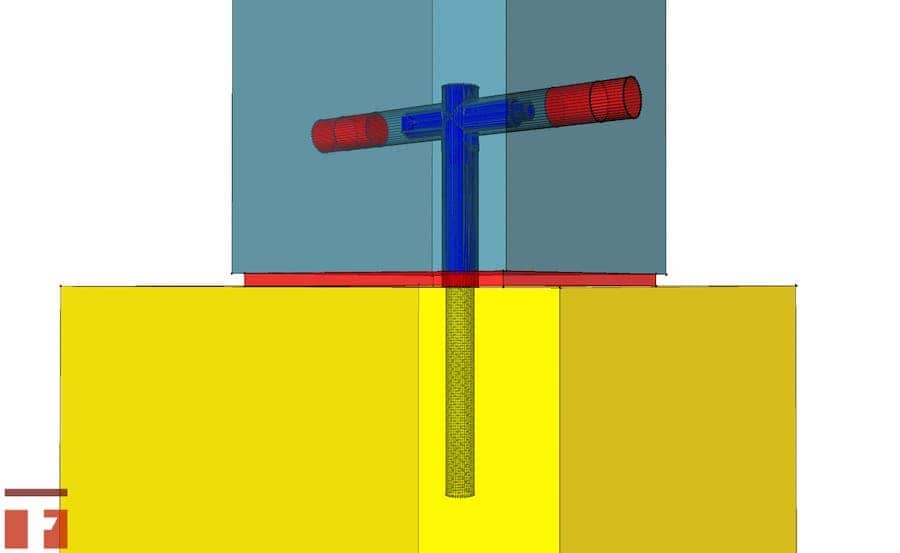
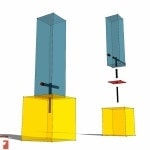
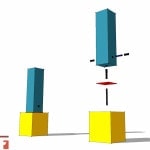
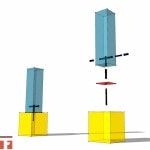
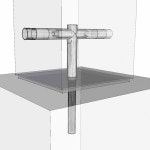
I’ve used Timerlinx before for this application, but I can’t remember what type of epoxy we used — do you have a recommendation?
There are two that come to mind. Simpson Epoxy maybe easier to find, I see it in the local building supply store near me.
The first is Simpson SET Epoxy, https://www.strongtie.com/epoxyanchoringadhesives_adhesives/set-3g_adhesive/p/set-3g
The second is Hilti Expoxy , https://www.us.hilti.com/anchor-systems/injectable-adhesive-anchors/r1216
Two questions:
1. What are you using for the red standoff in the diagrams? Currently I’m planning to use stainless fender washers secured with roofing nails, but am not exactly in love with the concept
2. Why do your drawings show dowels in both sides of the post? You only need to enter from one side and go a couple inches past center.
Thanks – love the website!
Thanks Anthony,
The red spacer in the drawings can be a piece of lexan, a Simpson CPS Stand Off Base, it separates the concrete from the post end grain.
The extra blind peg is a personal choice. I like the symmetry of having it on two sides as it matches a timber frame with traditional pegged holes.
Happy new year!
Thanks for the reply! I like the Lexan idea. What thickness would you use and how much smaller than the post dimensions would you cut it? I see that 1/8, 3/16, 1/4 thicknesses are readily available. Happy new year to you too!
I would go with 1/4″
Hey Brice. Have you ever used the connector for attaching a handrail newel to a 4″ concrete pad? We are planning to use 6×6 western red cedar posts and want to make sure the newel will remain rigid over time. I thought of leaving more length on the all thread so the connector would be higher up in the post. Any thoughts? Thanks!
I have used and spec’d these connectors for that purpose, it can be overkill though. It does have a limited range if it needs to be tightened in the future. I have also used this connector with great success. https://www.amazon.com/Sure-Tite-CECOMINOD046564-Sure-TiteTM-Newel-Fastener/dp/B004SMFF5G/ref=sr_1_2?ie=UTF8&qid=1516295407&sr=8-2&keywords=newel+post+installation+kit
Where can I find actual dimensions and hole sizes on the recommended installation of the # A475 ? We are anchoring 8×8 P/T Southern Yellow Pine to Concrete with an embed of 6” and a 1” polyethylene spacer. We were sent anchors with no instructions, our first time using, architect specifications.
Thanks
Take a look at the PDF at http://timberlinx.com/downloads/tx_drawings.pdf and page 17.
My June 14 comment has not been replied to, installation of the A475 ? We have more to purchase if you are up to a little assistance.
See above for my comment from your last post, the info you are looking for is at http://timberlinx.com/downloads/tx_drawings.pdf and page 17. We do not sell those connectors, I would direct any further questions straight to them.
If you can turn your post with the A475 onto the threaded rod there is no need to use the expansion pin at that time. Simply turn post until tight and then you can tighten the pin down the road if the post becomes loose.
I never thought of that Neil. That would certainly simplify installation if you can turn the post. Thanks for adding your thoughts!
Brice,
How much smaller is the Lexan to the size of the beam. 1/4″ all the way around?
Thanks
We are a commercial timber frame company and this is our preferred method of attaching post to concrete. The manufacture of the Timberlinx are a Canadian company and they are very nice and helpful. They get their product out in a timely manner. We use the Simpson CPS bases and Redhead Epoxy.
The company makes a jig for drilling the holes in the post and I recommend that.
It has a learning curve like everything else but if you can layout and cut a timber frame you can do this.
I agree about the learning curve, but they do make a great connection that is easy to get through any engineering requirements. Thanks for your thought Charles.